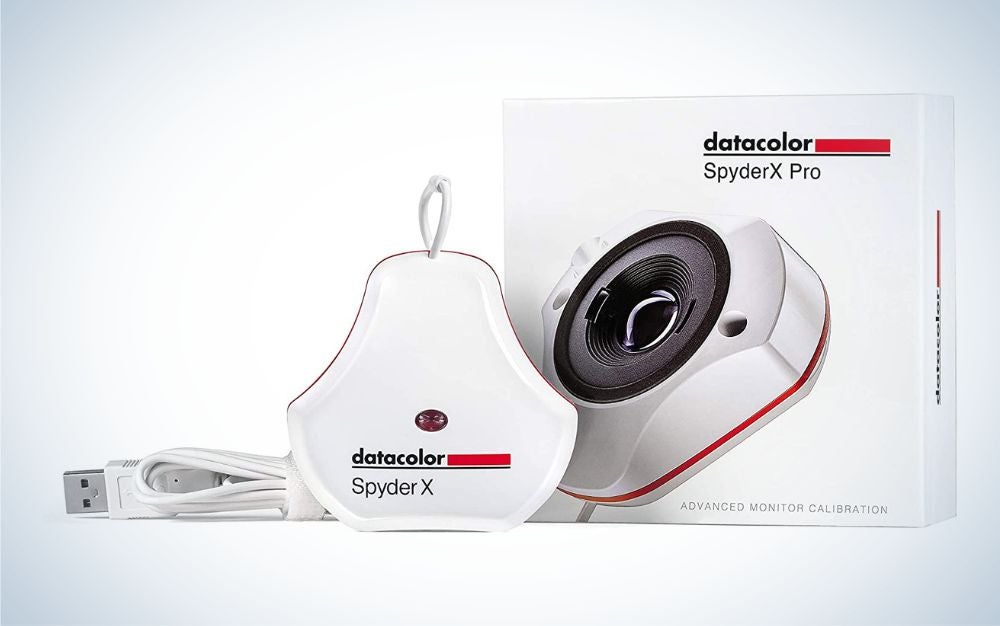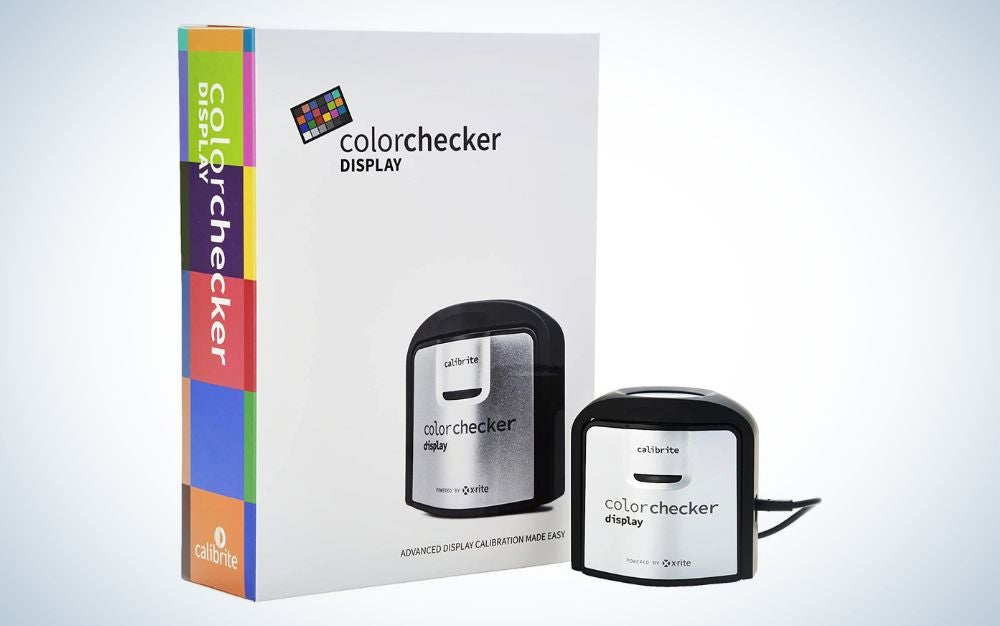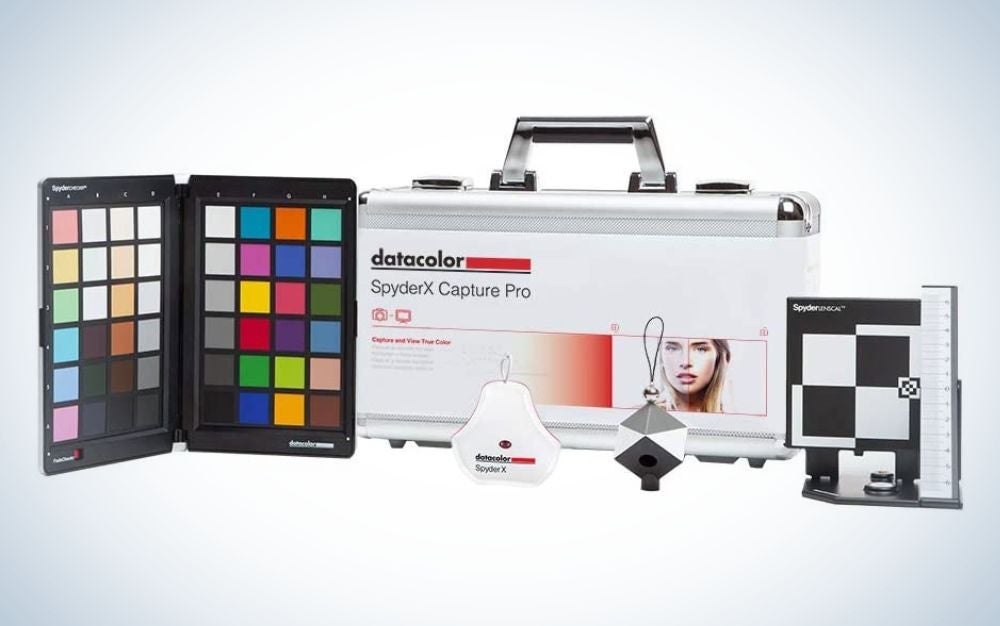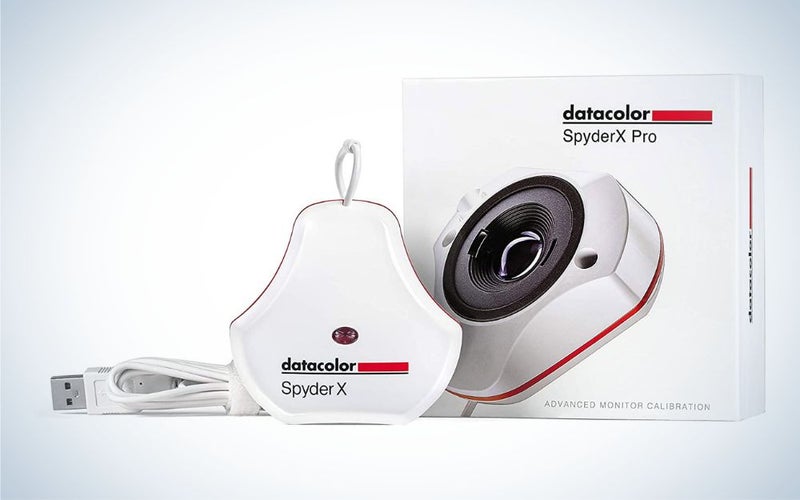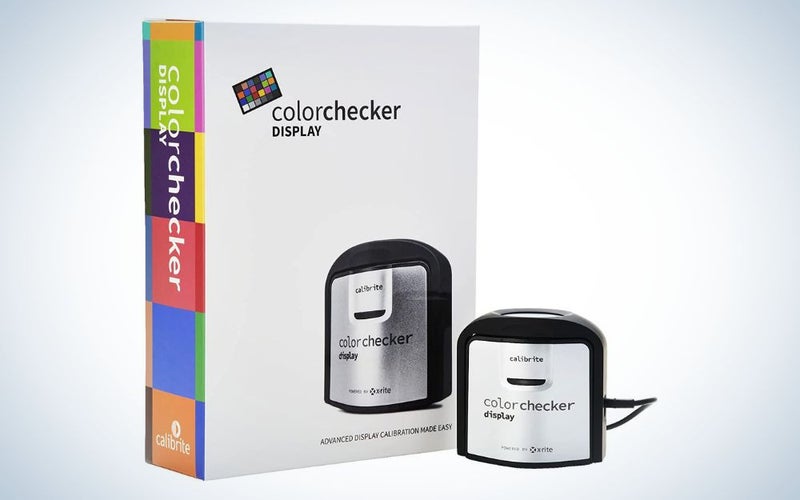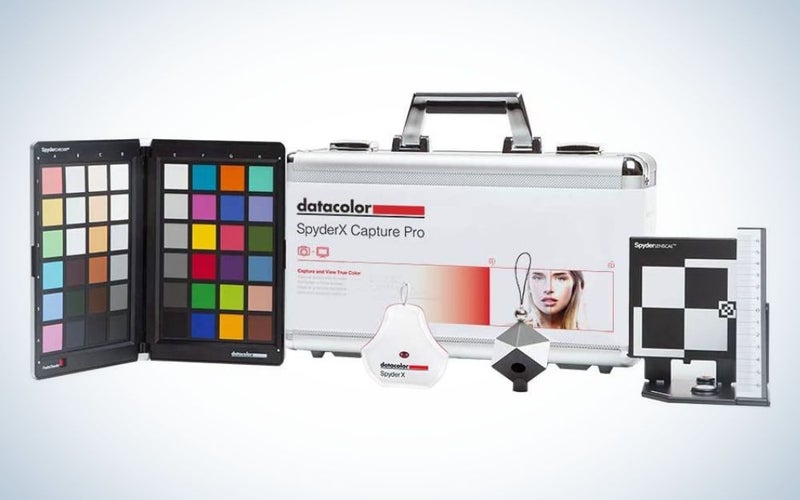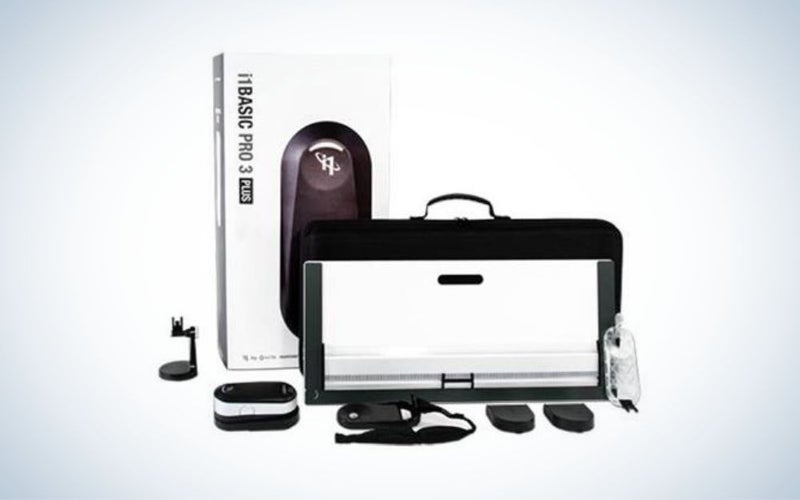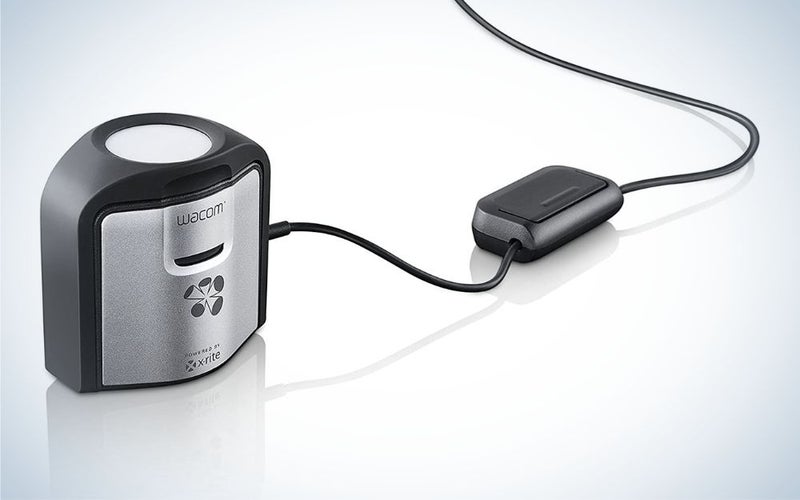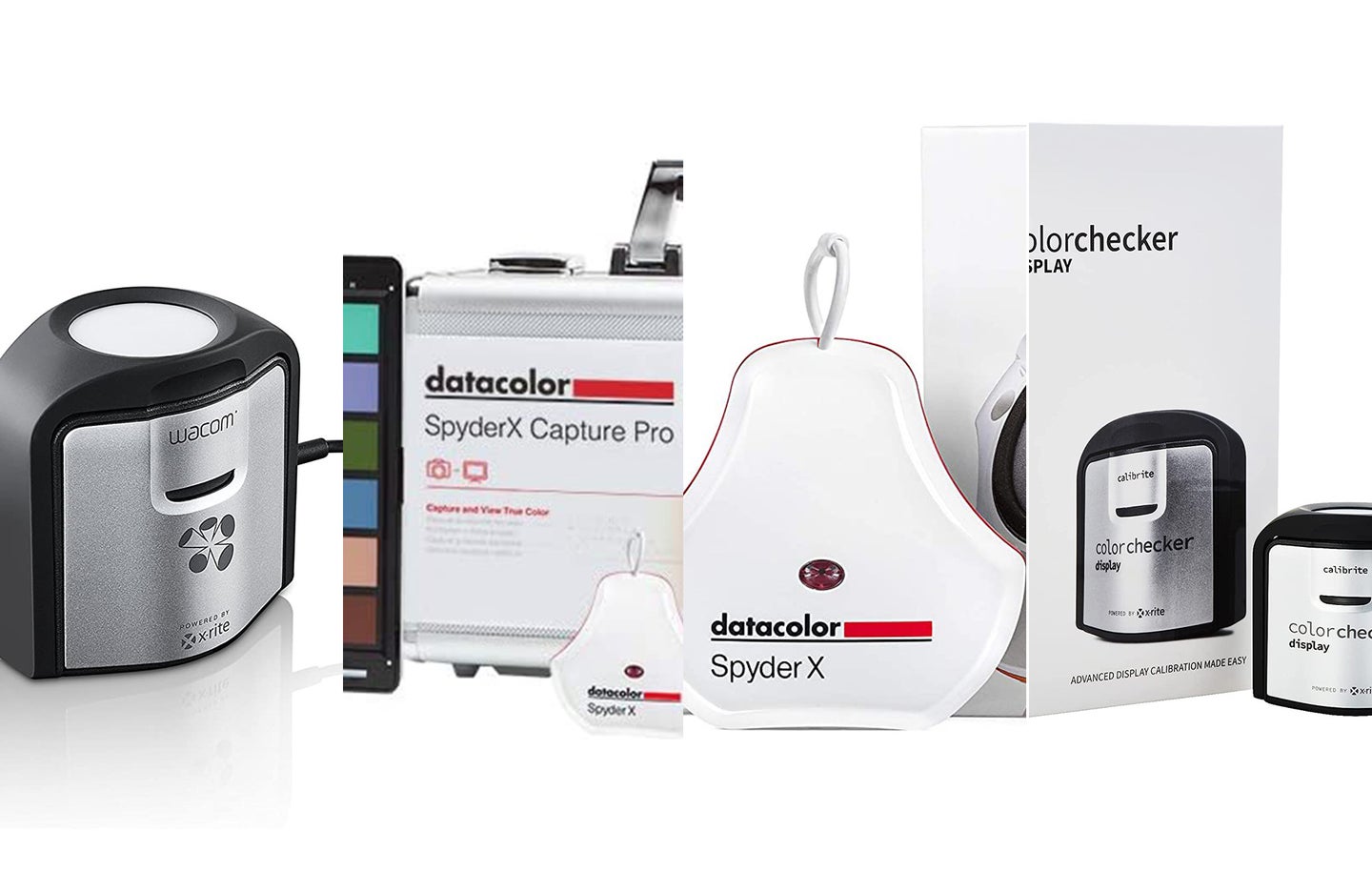
Monitor calibration tools are essential for anyone looking for precision and consistency in their photography. All monitors will produce slightly–or sometimes drastically–different colors, contrast levels, and degrees of brightness. Left uncalibrated, it could negatively impact your edits and prints. For example, if you are editing on an extremely warm monitor, you may overcorrect and end up with overly cool images, only noticeable when viewing on your phone or other displays. Or, you could go to make prints for a client and end up with dramatically different colors and contrast from what you saw on your screen.
Monitor calibrators are devices that sit on your monitor and measure the colors and brightness of the display. Some will also read ambient light to suggest how bright your monitor needs to be to see accurately in that environment. The best monitor calibration tools will help you get better and more consistent results in your photo editing, video editing, and printed work.
- Best overall: Datacolor SpyderX Pro
- Best budget: Calibrite ColorChecker Display
- Best kit: Datacolor SpyderX Capture Pro Kit
- Best for pros: X-Rite i1Basic Pro 3 Plus
- Best for Wacom displays: Wacom Color Manager
Best monitor calibration tools: Ratings & reviews
Best overall: Datacolor SpyderX Pro
Datacolor
Why it made the cut: The SpyderX Pro has long been the standard for photographers. It provides highly accurate results and allows you to calibrate multiple monitors.
Key features:
- Compatible devices: Laptops, desktop monitors, and front projectors
- Connector type: USB 1.1, USB 2.X, USB 3.X, and USB Type-A
- Ambient light sensor: Yes
Pros
- Easy to use
- Supports multiple monitors
- Ambient light sensor monitors light throughout the day for precise adjustments
- Quickly provides results
Cons
- Not compatible with 14″ and 16″ 2021 MacBook Pro Liquid Retina XDR displays
Datacolor, one of the most well-known calibration companies, released its SpyderX range in 2019. It claimed it was its fastest and most accurate monitor calibration tool yet, and indeed, it improved on the Spyder5 significantly. The SpyderX utilizes a new lens-based sensor system which is highly accurate, providing better white balance, color, and shadow detail. And it has a before and after feature, so you can see how much of a difference it makes.
It’s also much faster than previous versions. The first time using it may take about 20 minutes, but after that, calibration should only take around five minutes each time. You’ll only have to go through the process every couple weeks under normal circumstances. The software is easy to use and guides you through the process in an intuitive way. You’ll be able to focus on your edits instead of fussing with calibration.
This tool has an ambient light sensor that can monitor the room you’re working in throughout the day and suggest appropriate brightness and contrast. The software can either warn you to calibrate or automatically adjust brightness and contrast based on custom profiles. It supports multiple monitors, so if you have dual monitors and your laptop screen, you can ensure all three are correct. You’ll also have access to Datacolor’s StudioMatch™, which creates a target to share between monitors for consistency across all your workstations.
Best budget: Calibrite ColorChecker Display
Calibrite
Why it made the cut: Though more affordable than other options, the ColorChecker Display provides highly accurate calibration and works with laptops, desktops, and projectors.
Key features:
- Compatible devices: Laptop, desktop monitors, projectors
- Connector type: USB-A
- Ambient light sensor: Yes
Pros
- Easy to use
- Affordable
- Color matches up to four displays
Cons
- Doesn’t monitor ambient light
- Slower results
Formerly the X-Rite i1Display, this entry-level monitor calibrator offers a lot of value. It comes at a lower price than alternative options though it still has plenty of features and is very accurate. It works with laptops, desktops, and even projectors and can color match up to four displays. So whether you have multiple displays at your desk or your bounce between locations, it will allow you to ensure your entire setup is accurate.
The ColorChecker Display has an ambient light sensor to determine the best brightness level for comparing prints to your display. But, it does not constantly monitor ambient light like the SpyderX Pro, so you will need to do that manually if you work in a room where the light shifts significantly throughout the day. But it will remind you on a regular schedule to re-calibrate, which helps keep your display accurate over time.
Best kit: Datacolor SpyderX Capture Pro Kit
Datacolor
Why it made the cut: This kit includes all you need to calibrate your entire process, from shooting to post-processing.
Key features:
- Compatible devices: Monitors and projectors
- Connector type: USB 1.1, USB 2.X, USB 3.X, and USB Type-A
- Ambient light sensor: Yes
Pros
- Includes tools for calibrating camera settings
- Easy to use
- Highly accurate
- Monitors ambient light
Cons
- Not all users will need all tools
For serious photographers who want to fine-tune every aspect of their photography, this kit from Datacolor provides all the tools you need. It includes a Spyder LensCal, which allows you to precisely measure and adjust your DSLR and lens autofocusing. It helps ensure that you miss focus less and that the camera and lens focus exactly where you want them to. Because mirrorless cameras use the main camera sensor to focus, they don’t require calibration. But, it can tell you if your lens isn’t focusing properly.
The kit also comes with the SpyderCUBE for getting accurate exposure and white balance settings by providing white and black values. And the Spyder Checkr helps achieve consistently accurate colors across different shots, days, and even cameras. As a result, your raw files will be in a much better place before you even start editing, cutting down on the time you need to sit in front of your computer.
Finally, the kit comes with Datacolor’s impressive lens-based colorimeter, the device that calibrates monitors. It works with multiple monitors and provides access to SpyderX Elite for unlimited calibration controls. The software is easy to use, guiding you through the calibration process. You can also use Datacolor’s Softproof to preview how a photo will look as a print or on different devices like tablets. You’ll be able to ensure things are accurate before you hit print or walk away from your edits.
Best for pros: X-Rite i1Basic Pro 3 Plus
X-Rite
Why it made the cut: It offers excellent precision, video support, and the ability to calibrate unlimited monitors.
Key features:
- Compatible devices: Monitors, projectors, scanners, printers, cameras
- Connector type: USB
- Ambient light sensor: Yes
Pros
- Calibrates and matches colors on different displays
- Supports high brightness levels
- Ideal for video work as well
- Can also calibrate printers and cameras
Cons
- Very expensive
Serious professionals need to ensure their entire kit is calibrated for utmost accuracy and consistency. This calibration kit from X-Rite offers an impressive set of features and accessories to meet those requirements. The software allows you to calibrate every step of the process, from your camera to the printer. It has presets specifically for video production, making this ideal if you do a lot of color grading on your monitor. And the included XL ruler enables you to color calibrate even large format printers.
The included polarization filter helps cut down hot spots from reflective surfaces, resulting in better blacks and richer colors. It’s ideal for scanners, allowing you to reproduce artwork at a higher quality. Plus, the spectrophotometer has an 8mm aperture, allowing it to provide accurate results on a wide range of surfaces.
The i1Basic Pro 3 Plus allows you to create profiles for up to four displays that are connected to a single computer. And if you work in a lab setting, you can calibrate unlimited monitors that are connected to different computers. It also has a Kensington Lock port to keep it safe in public or communal settings.
Best for Wacom displays: Wacom Color Manager
Wacom
Why it made the cut: Since it’s specifically designed for Wacom devices, you’ll be able to get much more accurate results on your Cintiq screen.
Key features:
- Compatible devices: Wacom products, monitors, mobile devices
- Connector type: Not provided
- Ambient light sensor: None
Pros
- Designed by X-Rite for Wacom products for better results
- Can also calibrate mobile devices
- Works with multiple monitors
Cons
- Can be more complicated to use than other devices
Though other calibrators will work on Wacom devices, Wacom collaborated with X-Rite to design this to work specifically with its products, such as the Cintiq 27QHD Creative Pen Display. It will provide results tailored explicitly to your tablet as a result. You can also use it to calibrate other monitors and displays and even use it on mobile devices.
It allows you to save profiles for your different displays, and you can create custom colors to suit your needs. Everything is very customizable, so while you can adjust based on its recommendations, you can also fine-tune settings as you see fit.
Wacom’s monitor calibration tool allows you to check the quality of your display and monitor its health over time. That way, you can know if it might be failing before things get too bad. It also provides profile reminders to keep your display accurate.
Things to consider before buying monitor calibration tools
Screen type
Displays use different types of technology to project an image, from backlight LED to LCD or various types of technology in projectors. While most of the monitor calibration tools we’ve listed here are compatible with a wide array of displays, double check that whichever instrument you are considering will work with your particular display.
Ambient light sensor
The amount and type of light in the space that you have your monitor will have a significant impact on how you view your screen. For example, if you are in a room with lots of natural light, you will need different settings than if you work in a room with minimal windows. Likewise, if the artificial light in your space is very warm or cool, it will change your perception of the colors on the screen.
An ambient light sensor reads all that data and factors it into your screen calibration. Some calibration tools will not have these, however. So, if you want the utmost accuracy, be sure to look for one with an ambient light sensor.
And if light shifts throughout the day in your workspace–which it likely does–you may want to invest in a calibrator that is able to monitor ambient light and suggest settings throughout the day. Otherwise, you can manually take readings at different times of the day and create profiles based on that, but it will take more time.
Speed
How fast a calibration tool can provide results may not matter to some, but it will be essential for others. It may be especially important if you are calibrating multiple displays on a regular basis. Unfortunately, many manufacturers will not provide speed data in the product specs, but some will. If speed is important, be sure to look closely for that information.
Customizability
Some entry level systems will only allow you to make automatic adjustments without much insight into the process. That’s fine for the average person who is just looking to improve their monitors out-of-the-box experience, but falls short in high-end professional settings. That’s especially true if you’re doing custom printing work or doing work in less-than-optimal conditions.
FAQs
Q: How much do monitor calibration tools cost?
Most monitor calibration tools will cost anywhere between $150 and $400. But, there are some premium, professional-level calibrators that will run you upwards of $5,000 or even $7,000. The more expensive options are highly-specific and very feature-rich, and more than what even most professional photographers need.
Some high-end monitors also come with their own integrated calibration tools that don’t require extra hardware to keep color and brightness in-check.
Q: Do I need to calibrate the monitor for photo editing?
Need is perhaps a strong word in this situation. Whether you need to calibrate your monitor for photo editing truly depends on what your end goal of the photos is. If you are a casual photographer taking pictures for fun, calibrating your monitor really isn’t necessary. But, if you want to up your game and have full control over your work, then yes, you should calibrate your monitor. And if you are editing photos for prints, you definitely need to calibrate your monitor for accurate and repeatable print results.
Q: Can all monitors be calibrated?
Most, but not all monitors can be calibrated. In order for a monitor to be calibrated, you’ll need access to RGB controls, brightness and contrast, and the ability to set profiles on that monitor.
Q: How often does a monitor require calibration?
All monitors will shift in brightness, colors, and contrast as they age, which is why it’s essential to calibrate regularly. Broadly speaking, you should calibrate your monitor about every month. But, this somewhat depends on the display. Some are more stable–especially newer monitors–and once every two months will be enough.
Q: Are monitor calibrators worth it?
Monitor calibrators are worth it for certain photographers, graphic designers, and videographers, but not everyone. Spending money on a calibration tool will not be worth it if you are only posting to Instagram or taking photos casually.
But calibration is worth it for those who want complete control over their images. It is especially essential if you print your photographs. Calibration will help ensure your photos are printed with accurate colors, improving your prints. And if you aren’t printing, calibration tools are worth it if you simply want to ensure consistent quality across your work. It is also crucial if you work with a team and want colors to be reliably accurate across all team members.
Final thoughts on monitor calibration tools
Despite being rather technical pieces of equipment, the best calibration tools are easy to use and provide accurate results. For those serious about their photography or video, it is an essential tool that will make a difference. You’ll get better photos, videos, and prints with less work and will have more consistent results over time.
Methodology: How we picked the best monitor calibration tools
The writers and editors here at Pop Photo have decades of experience in photography and have worked with most major equipment manufacturers, including monitor calibration tools. I have spent the past 10 years or so either working to oversee consistency across a group of editors or printing my own photographs, which has provided me with experience calibrating screens.
When selecting the best monitor calibration tools, we looked at important features such as ambient light sensors and the ability to match multiple monitors. Ease of use was also critical, as calibrating your screen shouldn’t be overly challenging. Lastly, we aimed to provide products at different price points and experience levels to suit different users.
The post Best monitor calibration tools of 2022 appeared first on Popular Photography.
